26th & 27th February 2020
Please Note: Videos covering the material in this blog post appear at the bottom of this post.
When we drew back the drapes that morning the sun was a red orb in a strip of blue on the horizon. But that didn’t last for long. Grey clouds blew in from the west and wiped it all away.
The day’s journey started as a repeat of the drive two days prior, as we needed to go via St Helens to reach the Tasman Highway to Launceston. We only just made it through morning coffee (made on a picnic table and taken back to the warmth of the car) before drops of rain appeared on the windscreen. A few minutes later, as we made our way out of town, we were in drenching rain.
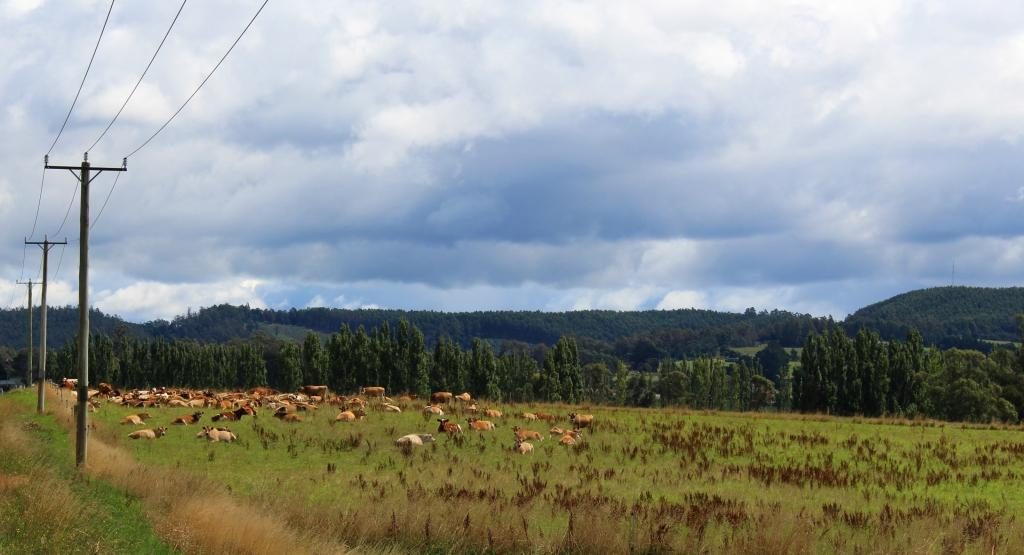
The first part of the drive was mostly beside the sea, with regular ocean views over calm and unruffled waters. The road turns inland at St Helens and meanders its way over mountain after mountain and through valley after valley, until it reaches Launceston. The mountains are almost all heavily timbered but much of the area in the valleys are cleared for farming. We at last saw the emerald green Tasmania of which we had so often been told.
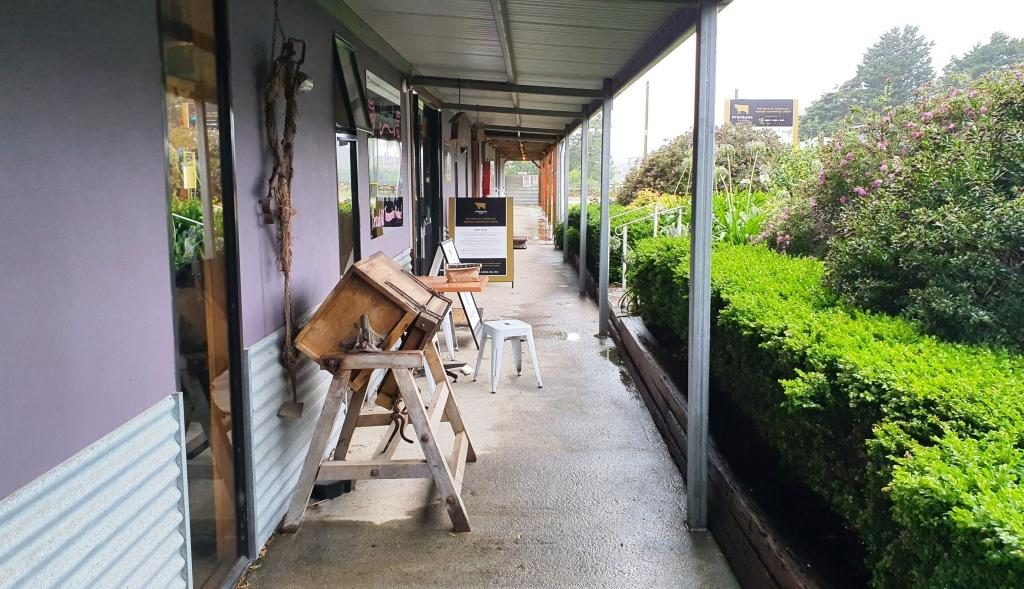
The plan for the day had included visiting a couple of waterfalls and doing some short scenic walks, but the rain put a stop to that. So our first tourist stop was at a farm and cheese factory. Just off the main road at Pyengana, right on the farm, the factory and a retail outlet and cafe attracts a large proportion of passing tourists from this relatively busy highway. We had to line up to sample. We bought two cheese flavours.
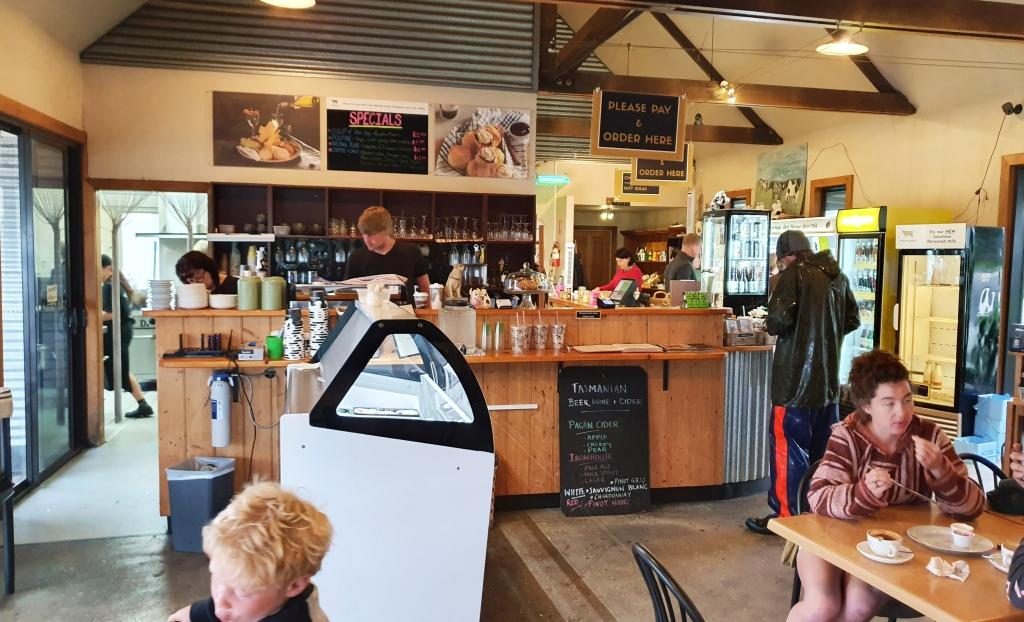
Immediately after we married, Ruth worked in the cheese producing Drouin Butter Factory in West Gippsland. We used to buy full cloth wrapped cheddar rounds, like those displayed at this cheese factory. On this occasion we satisfied ourselves with two small cheese wedges.
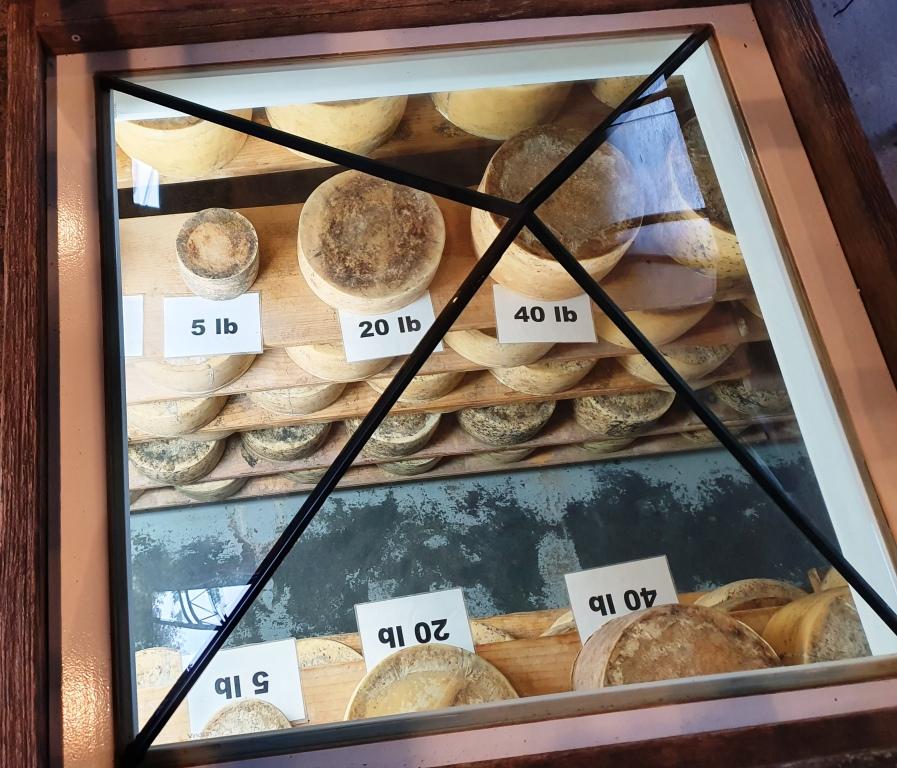
Further down the road, past the farm, were a couple of waterfalls, but the rain was too persistent for us to see them and stay dry. So we returned to the highway and drove on steadily, because that is the only way to handle Tasmanian roads, particularly in the rain. But the scenery was attractive, even through the rain, so we did not feel robbed.
At about midday we reached the old tin mining town of Derby. The tin mines have long been closed but its history and its location on the road to the east coast has kept the town alive.
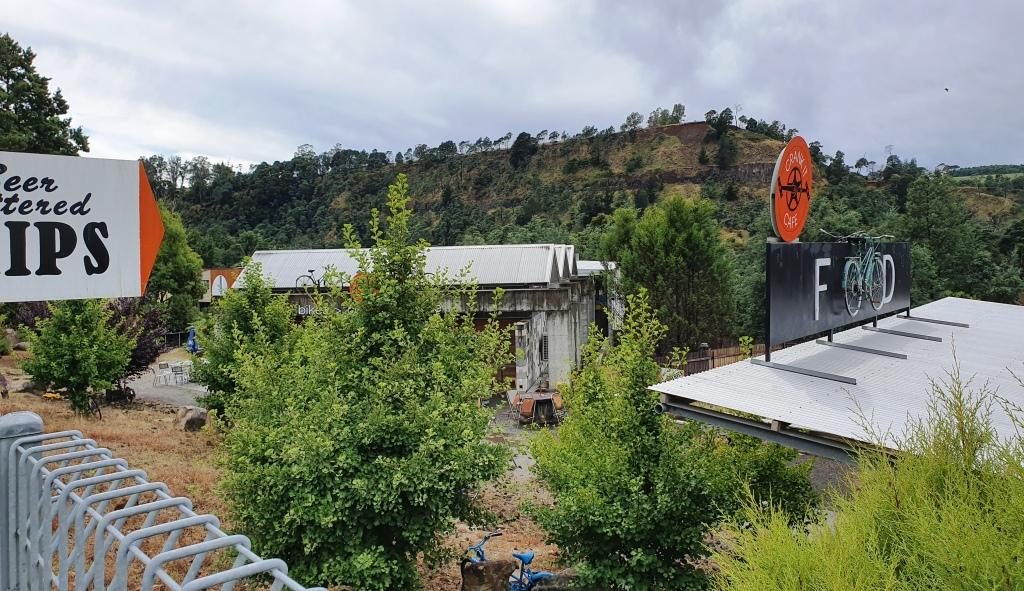
The housing that remains lines the road that runs through the valley. To our right the hill was a large mullock heap from the mining activities.
The mining long gone, Derby has reinvented its self. It has become a Mecca for mountain biking. Bike tracks have been built in the surrounding hills that are drawing competition from around the World. One cafe has committed itself to mountain biking culture, whatever that is.
With rain abated we found the Two Doors Down Cafe (there has to be a story to that name) and enjoyed a pleasant lunch. An interesting feature of the cafe was a large picture on the wall showing the town in its mining heyday.
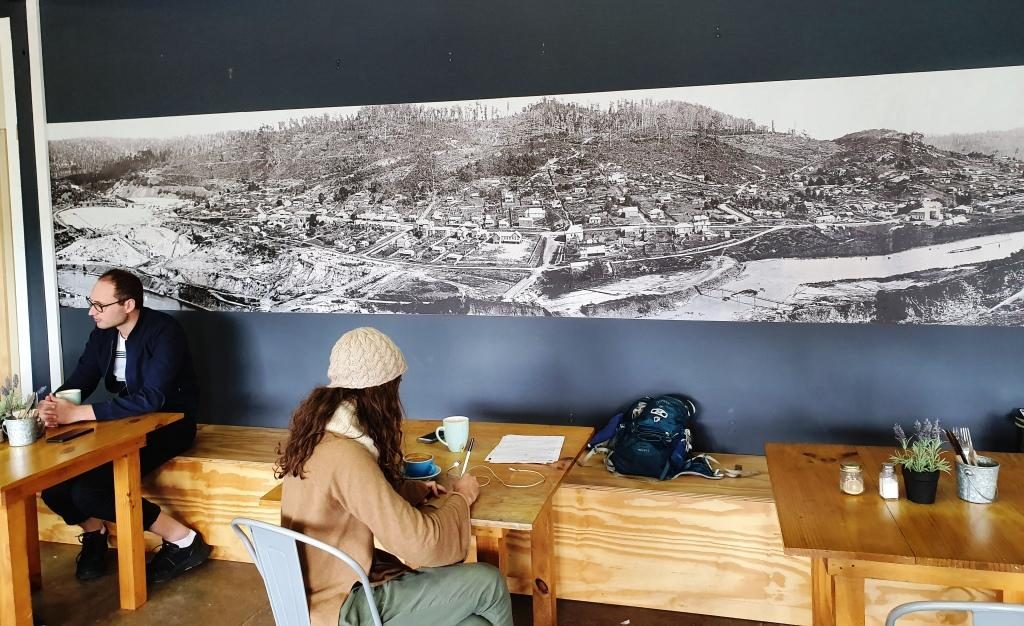
A bit further on we stopped at Branxholme to photograph the Chinese bridge over the Ringarooma River. Branxholme has a strong connection to the history of Chinese miners in Tasmania. It is a key point on what is known as The Trail of the Tin Dragon that links tin mining sites from Launceston to St Helens.
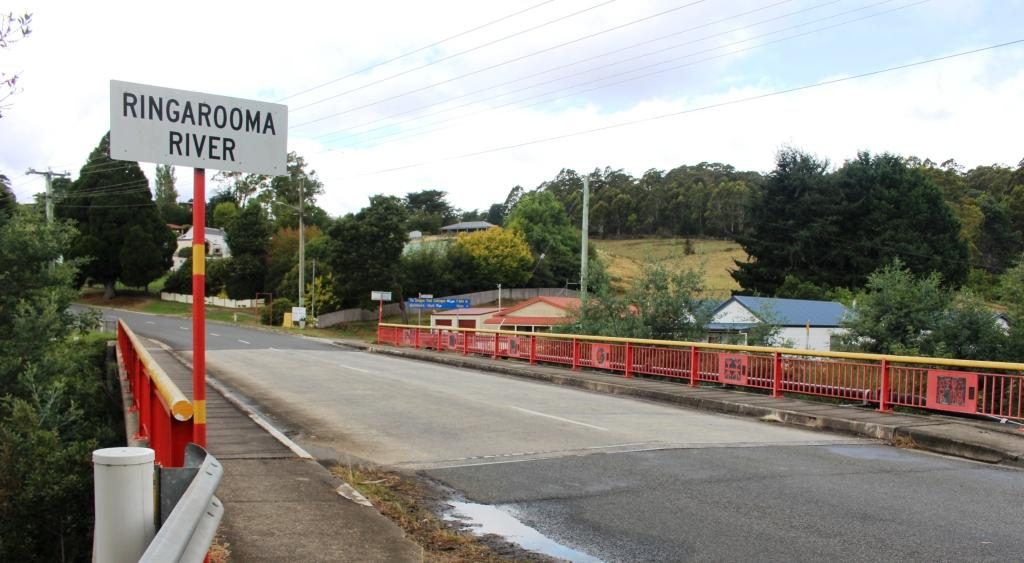
A short distance past Branxholme we detoured on what was not much more than a country lane, towards the town of Ringarooma to find the small town of Legerwood its carved trees. In 1918 seven trees were planted beside the road at the location that in 1936 became Legerwood, one for each of the locals who did not return from WWI.
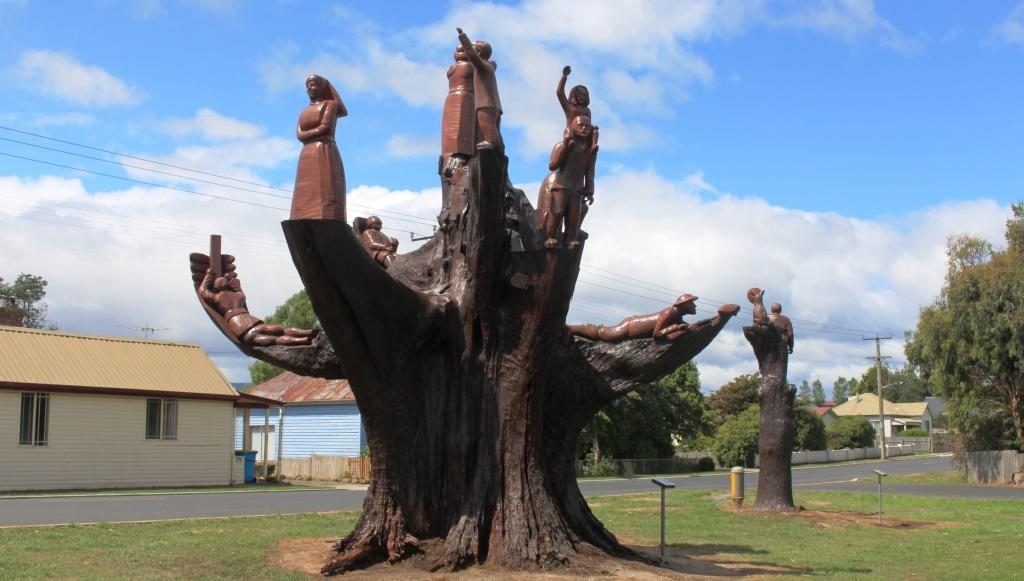
By 2001 the trees has become a safety risk so they were cut back and the stumps were carved into a memorial for each of the men. The carving was carried out using a chain saw. A plaque on a stand at each tree tells the individual serviceman’s story. A rest area has been built behind the memorial trees with space for a few RVs to park overnight.
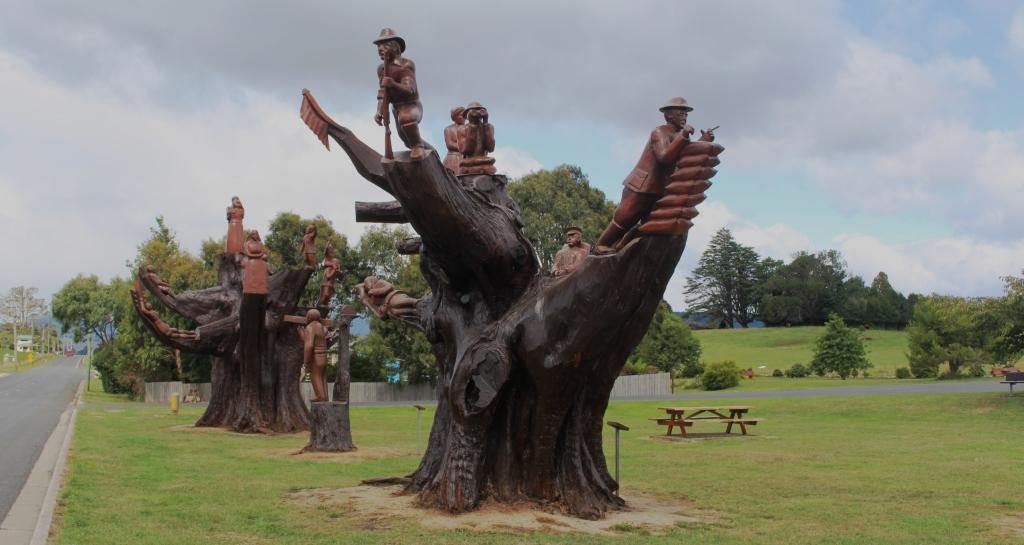
The only other stop was at Sideling Lookout near the summit of the Sideling Range, the last mountain before the commencement of the decent into Launceston. Even with low clouds the view was great. A sign says that on a clear day you can see features on the Bass Strait Islands to the north east.
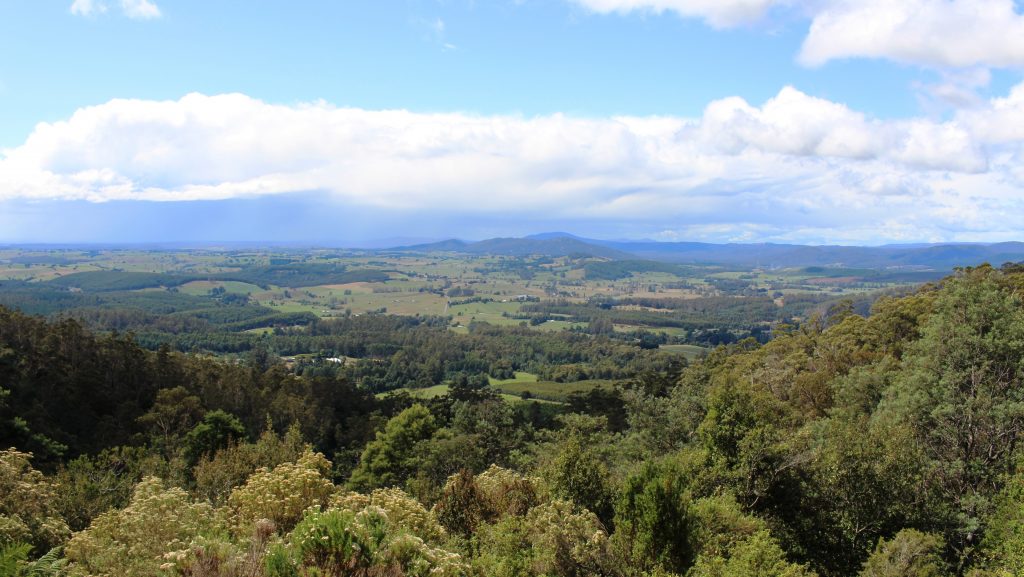
Our Launceston accommodation was at Adina Place Apartments on the steep slope above the Launceston central business district. Adina Apartments is a multi storey block with access to the rooms from a balcony that runs the length of the building, overlooking the road. The views from our windows were to the North and North West along the Tamar Valley.
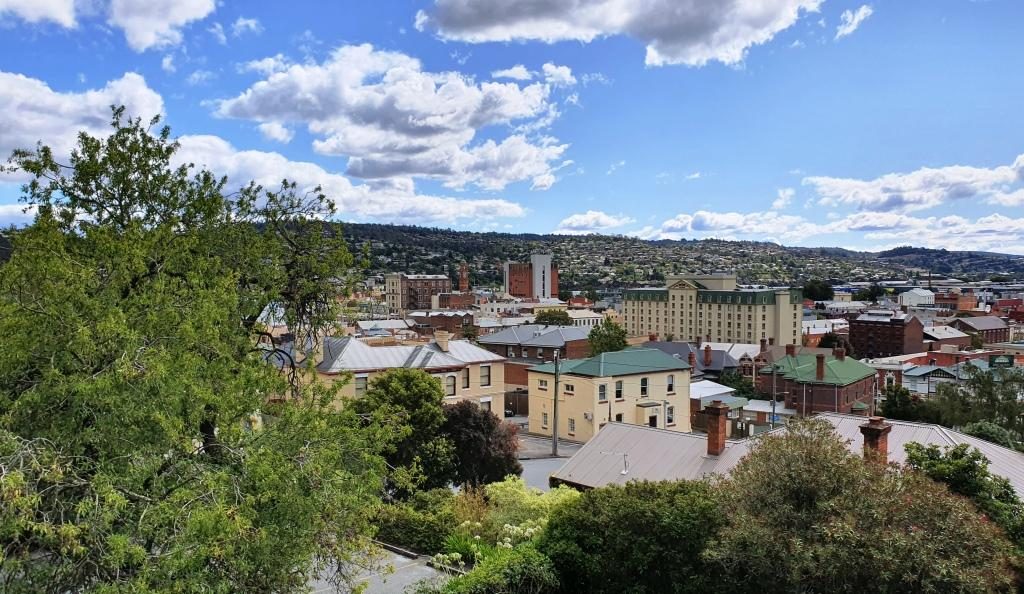
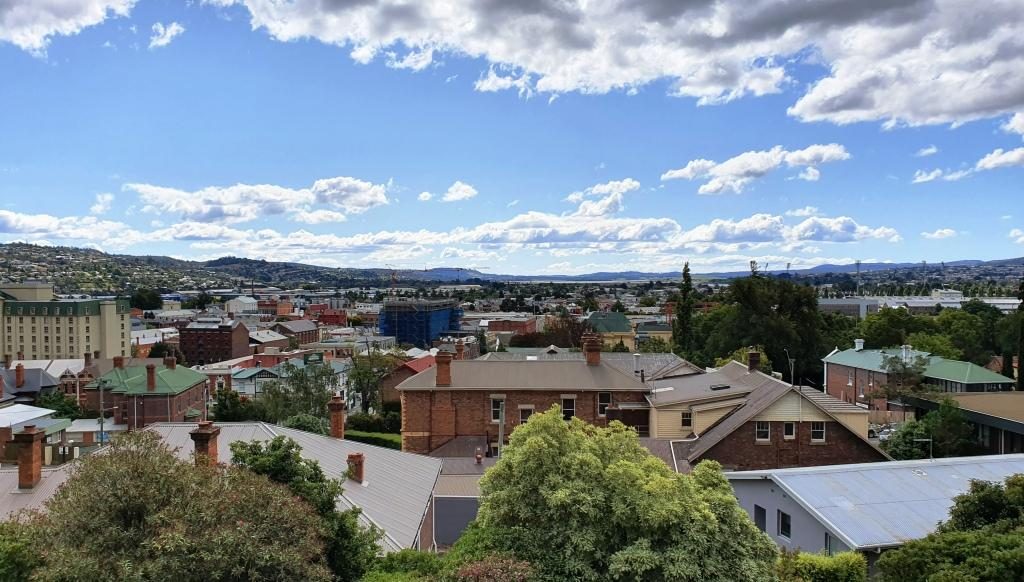
The first day in Launceston was not very holiday friendly. We started out at 14C and (according to the BOM) feeling like 12C, with a strong and cold north-easterly gusting in from somewhere around the freshly fallen snow. It may have got to 16C later in the day. It was hard to tell.
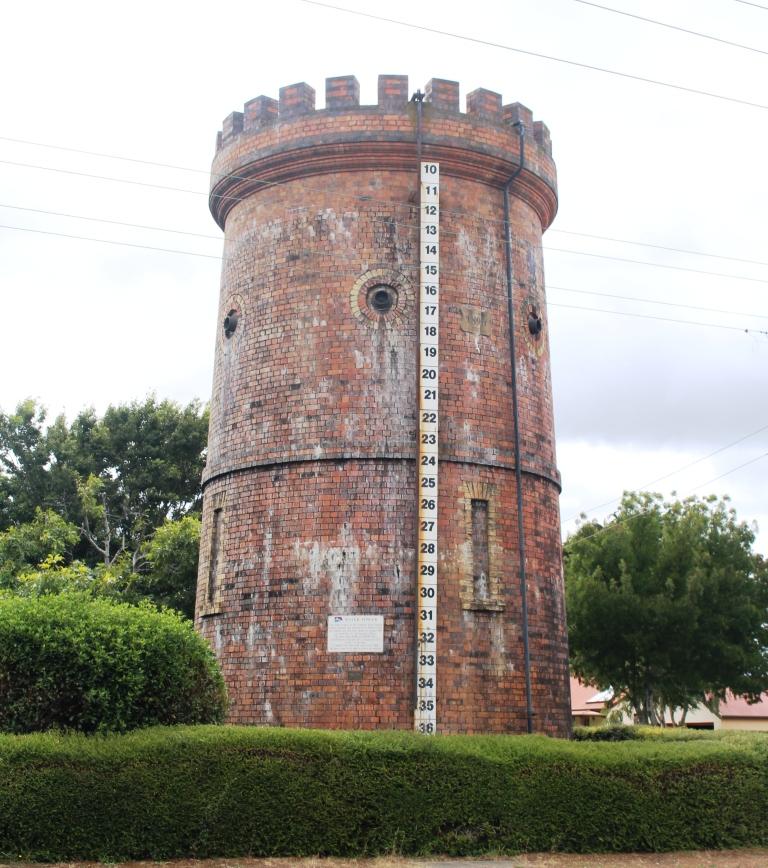
We had intended to start the day with a visit Ben Lomond, one of the highest mountain peaks in Tasmania and host to some of the local ski fields, but that had to be scrapped with forecasts of low temperatures, wind and possible snow. The plan would have taken us south of Launceston so we stuck with that plan to visit the other items that we had identified. These were mainly National Trust managed homes. All are open to the public for a fee, but with only a morning to spare we were only intending to look at them from the outside and to drive through the country side.
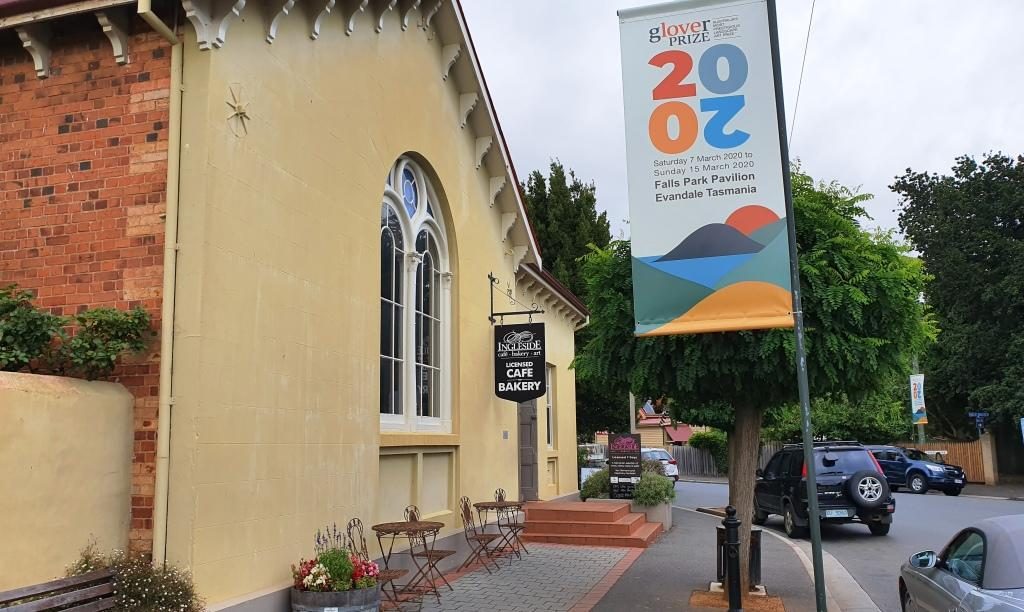
First we drove to Evandale, passing Launceston airport on the way. At Evandale we found a bakery so inviting that we went in for coffee. The warmth was very welcome as was the coffee smell and the wide range of cakes from which to choose.
Evandale, on the old Hobart to Launceston road, has almost all historic houses. It is like an English village. If you built a new house I think that you would need to make it look old to fit in.
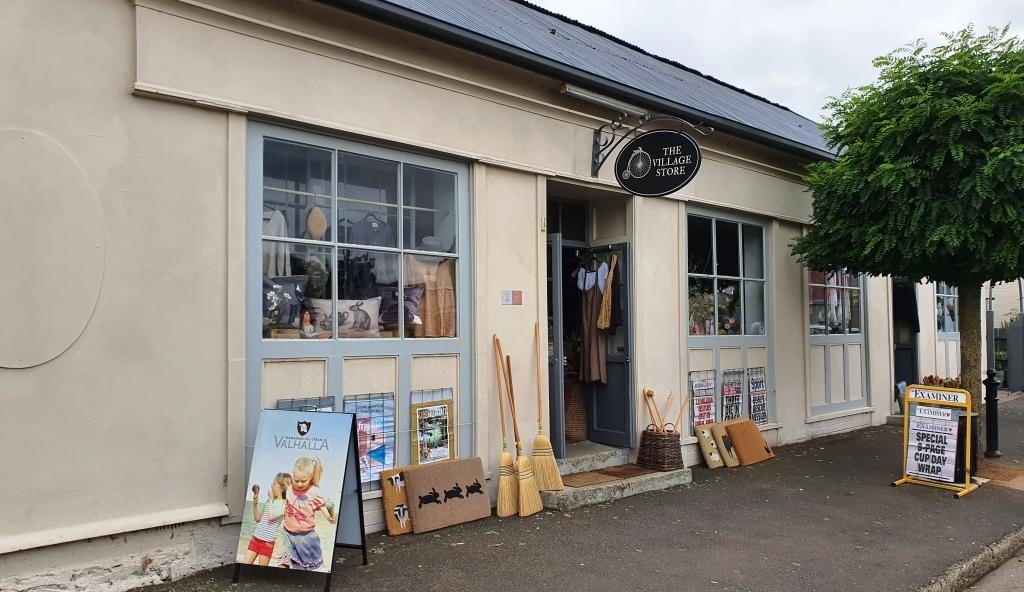
About a week before we were there Evandale hosted the annual penny farthing bicycle championships. The races are run over a triangular course in the village. A village fair forms part of the event featuring stalls, music, singing, dancing, vintage cars, historical costumes and a grand parade. It must be quite a day.
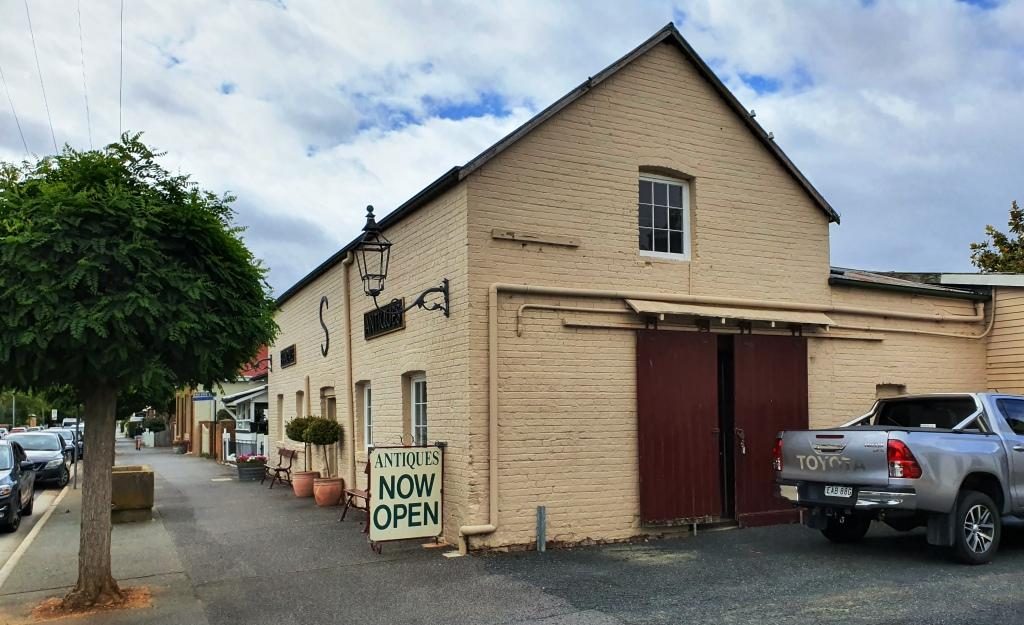
Of the National Trust homes that we visited, Clarendon is the stateliest. It was built in 1838 and must have been the centre of colonial social life in the area. Like its piers it is available to host special functions.
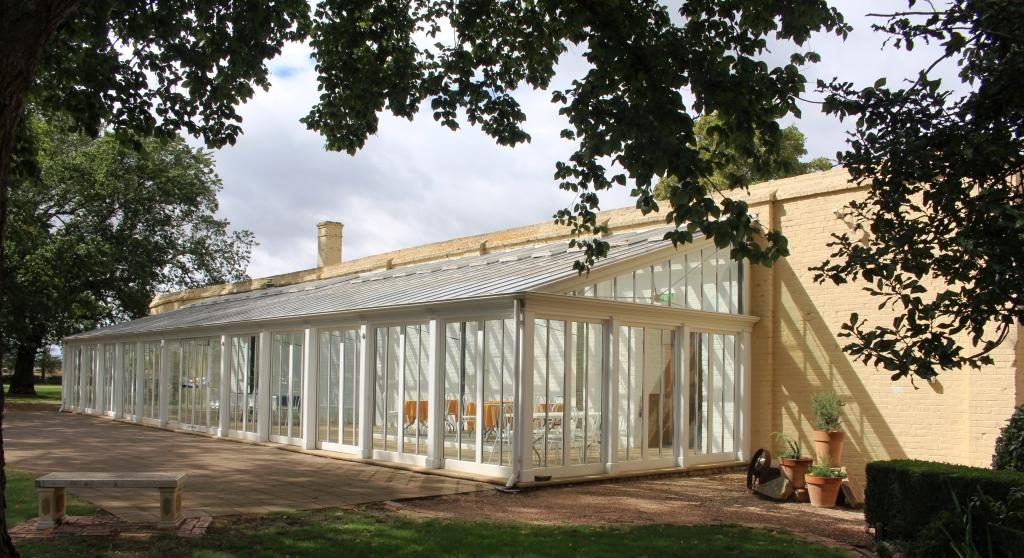
Brickendon and Woolmers Estate, near Longford, were built by the Archer brothers. Brickendon has been operated by the same family since 1824. Woolmers Estates dates back to 1817. Both properties were added to the National Estate in 1910 because their connection to convict history. Both were built by convict labour. The Archer brothers were regarded as humane masters. Jeffrey Archer became a member of parliament and played a role in the ending of transportation.
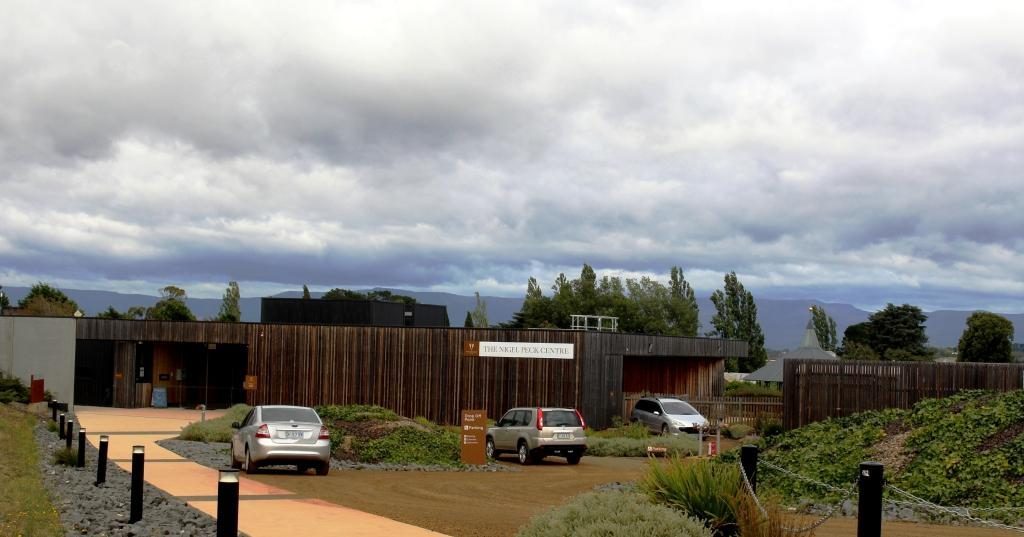
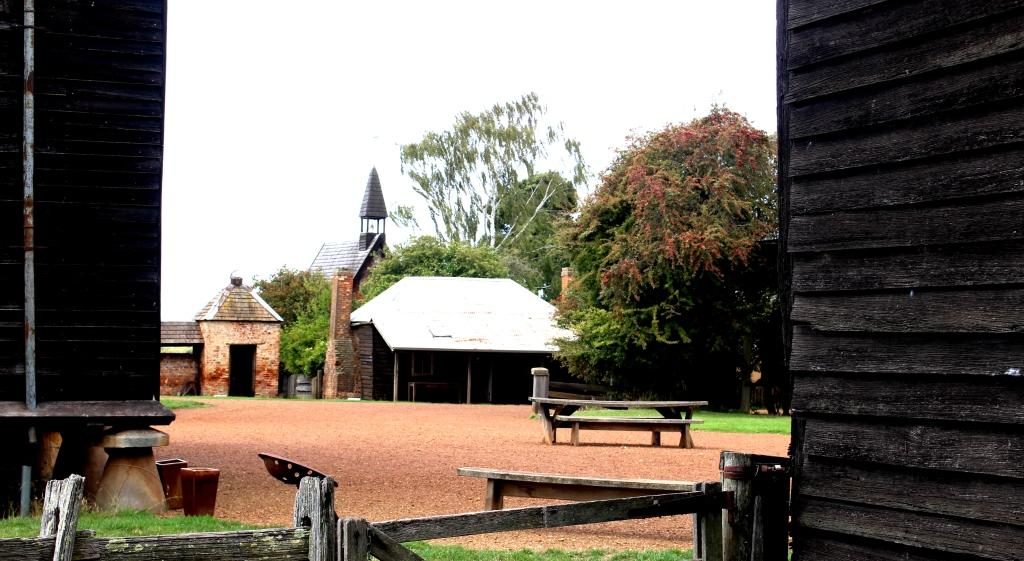
We came back to Launceston to pay a visit to some friends of Briony at their place of business and then made our way to Cataract Gorge. This geographic feature is quite close to the City and surrounded by suburbia.
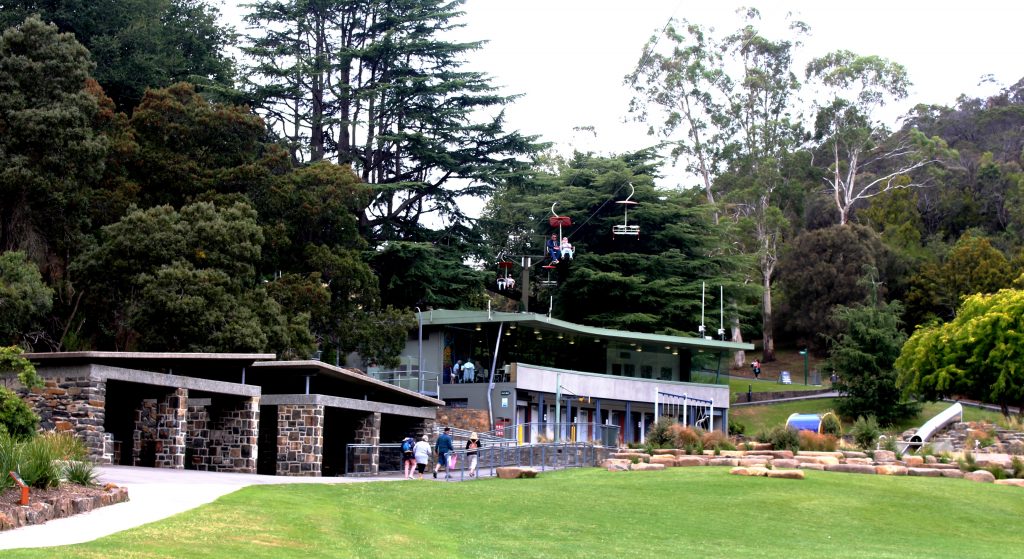
Some of the developments in the gorge have been there for a long time. We remember them from our previous visit. Other features are more recent. A suspension bridge and a chair lift carries people over a small lake and link to various walks. There is a swimming pool, surrounded by lawns, a cafe and a inclined elevator to make it easier for the less mobile to move between the various levels.

We started with late lunch in the café. Then I went for a walk past the pool, returning via the suspension bridge, while Ruth tried to hide from the cold. We gave the chair lift a miss, as did almost everyone else that day.
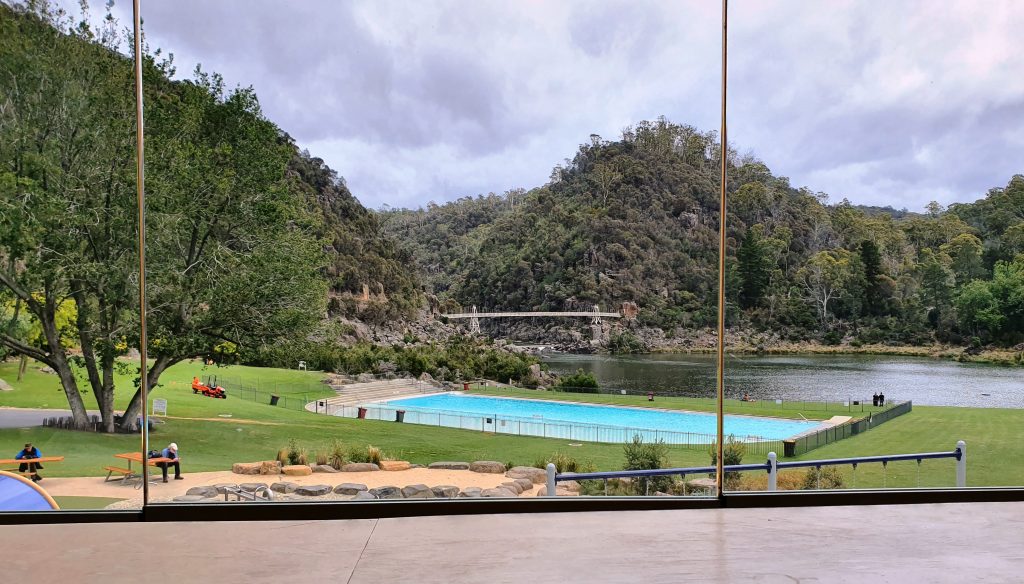
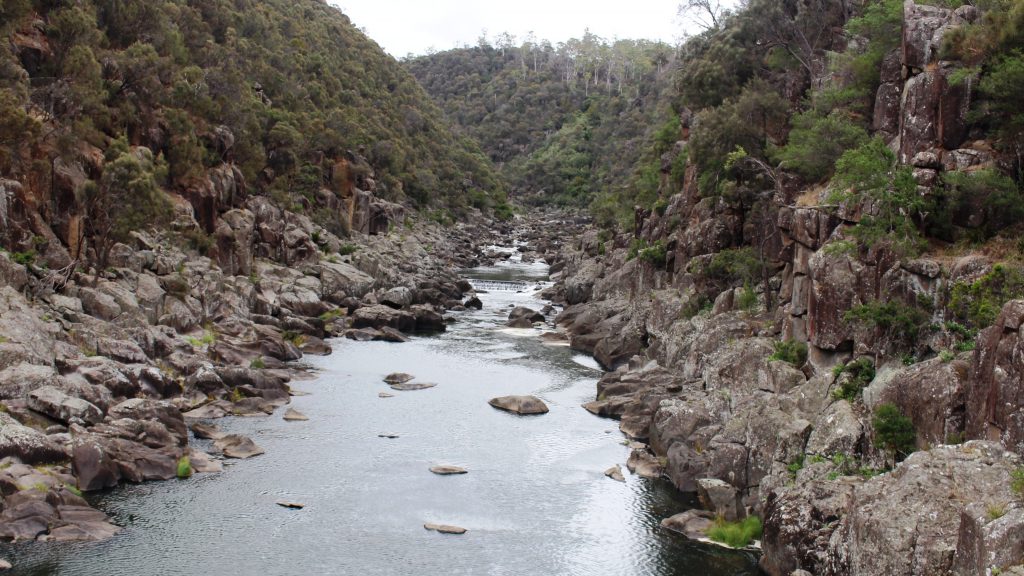
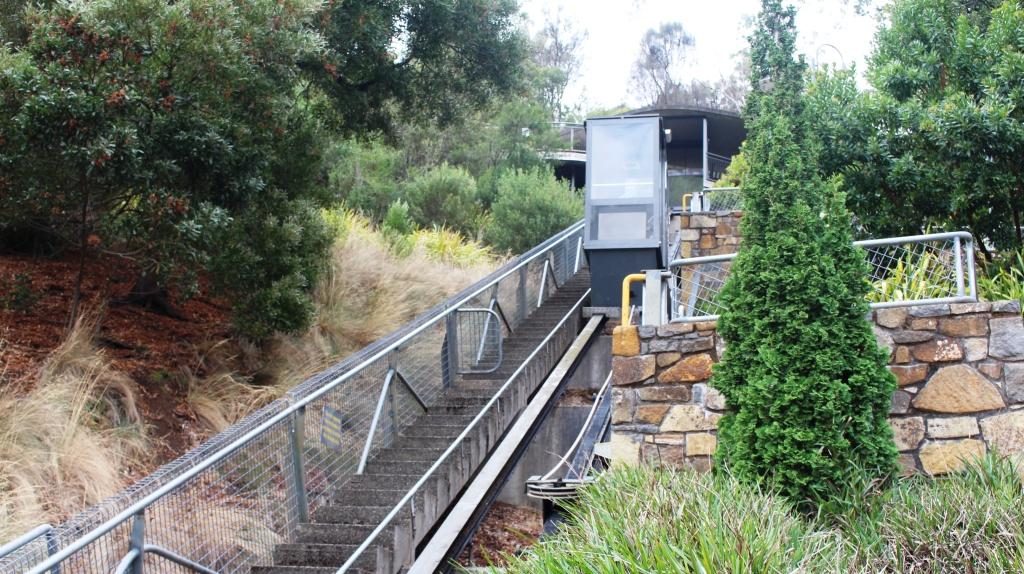
We finished with a drive through city streets. Launceston is built in a narrow valley with city and suburbs spreading up the sides of and over the hills. There are streets that look like the plunge of a roller coaster.
By now there was not much of the day left so we returned to our apartment. It was pleasant to be able to turn the heat up on the air conditioner and settle back in warm comfort for a peaceful evening.

Hello Ruth and Kevin,
I am a lifetime Hobartian, until 11 years ago when I made the ‘sea change’ to live in Bicheno.
I was just sitting here googling stuff, totally unrelated to Tasie travel (as one does), when I’ve stumbled on your travel diary of our East Coast. Wow, lovely photos and informative commentary! Even though it is now my area, I was impressed by your unbiased descriptions of the towns you visited and their eateries etc.
Then, I made another ‘cuppa & “travelled the Great Ocean Road and Sorrento with you”. Great.
Happy future travels to you both, now Aussie is relatively back in business.
Regards, From. Deirdre.
Thank you for your kind comments. We try to call it as we see it and love Bicheno. We had called there on a previous trip over 40 years ago and regarded it as a “must stop” town on this trip. We envy you your place of residence. Particularly in the Summer months.
Best wishes, Kevin